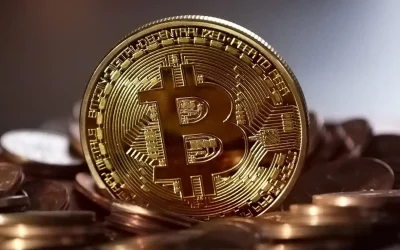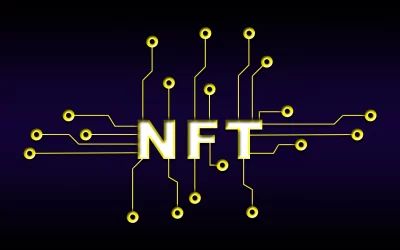
POLKADOT

Polkadot
Polkadot is an extremely innovative blockchain that aims to overcome what are the two main limitations of currently existing platforms.
These are scalability, or rather the absence of scalability, and hyper-specialization.
Regarding scalability, that is, the inability to process too many transactions in the unit of time without sinning in decentralization, Polkadot uses the technique of sharding, that is, it divides the blockchain into many fragments that are coordinated by a central blockchain that has the task of putting all the pieces together and consequently has the task of sorting the heaviness of the task into different parts, streamlining it. As a result, it exponentially increases the number of operations it can perform in the unit of time.
As far as hyperspecialization is concerned, Polkadot allows interoperability between different chains so that so many blockchains, so many platforms each one deputed to do very well what it knows how to do, can communicate with each other interacting and creating an extremely large ecosystem. You will also understand that Polkadot is a very interesting project worth following because the future, given also the direction we are taking with the emergence of so many De-Fi platforms on which these two limits are extremely heavy and oppressive.
APPLICATIONS AND LEVEL OF ADOPTION
The best projects that won parachains auctions
Acala- Project DeFiAt its core, it has several key DeFi features such as Liquid staking, a model for creating a stablecoin collateralized by crosschain assets, and finally a DEX that is based precisely on these pillars just mentioned. All garnished with low fees due to transaction speed paid in any token and not necessarily in the Acala token
Bit.CountryPermits anyone to create their own communities in their own metaverse. Investors include “Animoca,” a well-known recurring Brand in video games, NFT and the metaverse.
MoonbeamSmart-contract platform. Interoperability; with ethereum and with bitcoin.
Parallel FinanceProtocol DeFi, complementary in part to Acala, is a lending platform i.e. a money market. Lending platforms have proven to be critical to a defi nitely thriving and functioning ecosystem. In addition to liquidity staking, which we also find on Acala, is the lending protocol.
Astar Network (ASTR) Astar Network is closely related to the already implemented Shiden Network and was formerly known as Plasm. It is a powerful “Substrate” library module that allows developers to add Plasma features as Layer 2 solutions built to improve scalability. This combination could potentially make any blockchain within the Polkadot system infinitely scalable!
How does it work
Polkadot succeeds in achieving these two results because of its modular structure and architecture.
It means that it is composed of several components that are repeated and, above all, work synergistically with each other. Each of them is deputed to specific tasks and synergistically the others achieve the common goal of carrying out this the platform activities. The most important module of all is the so-called “Relay chain,” which is the central module, the heart of the Polkadot ecosystem; that is, the one on which the DOT token runs, which is the native token of this platform.
What is the purpose of the Relay chain?
First of all, for governance: the DOT token holders have an incentive to vote/propose for new changes, thus evolving the whole ecosystem in a direction that is then decided from time to time, based on the needs that arise and are faced with over time. This, in an extremely dynamic field like blockchain technology, is very convenient and optimized in terms of resources and effort” in implementing a change precisely because it makes forks obsolete, that is, subdivisions of a blockchain into two new blockchains that divide the community, the miners and really do a lot of damage to what is an ecosystem that instead works better with a democratic system of this kind. The second task of the “Relay” chain is to ensure security, this is through two mechanisms: BABE (Blind Assignment for Blockchain Extension) is responsible for producing new blocks, GRANDPA (GHOST-based Recursive Ancestor Deriving Prefix Agreement) is responsible for finalizing old blocks.
BABE is an algorithm for creating revival chain blocks consisting of the headers of all valid and available parachain blocks produced by the collectors. The BABE algorithm works on the basis of slots (time intervals): the right to produce a block in a relay chain in a given time interval is randomly granted to a validator known as a slot leader.
GRANDPA is a finalization mechanism in which each validator votes for the highest block it considers valid (in fact, voting occurs for all block ancestors).
The last task of the Relay chain is to coordinate between different chains, i.e., to coordinate both with Polkadot’s native blockchains, because one can extremely easily build a blockchain on Polkadot that is called a parachain, but also with external blockchains such as ethereum. A big extension to external blockchains.
What are parachains?
They are the specific component of the Polkadot ecosystem, that is, real blockchains developed directly on Polkadot. Each of them has its own token, so precisely it is a blockchain itself in its own right, and it is deputed to do a specific and particular task. Obviously, the token will be tied to exactly this task; thus, everyone can unleash their imagination by creating their own parachain in an extremely simple way thanks to a substrate framework that is made public and disclosed by the Polkadot team. With this framework, one can develop one’s own parachain in a matter of minutes. It will integrate to others and external blockchains thanks to the Relay chain. Creating new parachains requires bonding i.e., binding some DOT tokens, Polkadot’s native tokens, in order to avoid spamming of useless parachains. Once a parachain is no longer needed and you decide to take it away you release the dot tokens and in this way it becomes expensive to have a parachain.
Bridges
Finally, there are the bridges, entities that are responsible for making the Polkadot world communicate with external blockchains such as ethereum, Bitcoin… They too are real blockchains and have their own tokens.
There are already so many projects under development and now ready to be put into production in the Polkadot ecosystem. These are either parachains or bridges such as Edgeware which is a blockchain deputed to the development of smartcontracts on Polkadot, compatible with programming languages even external to Polkadot; Then ChainX which is a multi-asset management protocol that deals with interoperability management and deployment of different coins from different chains into a single “wallet”/internal world in Polkadot. Darwinia network that deals with making ethereum collaborate with the Polkadot world, great for the defi world.
Parachain auctions: the race of app developers
Parachains are blockchains directly connected to the Polkadot relay chain.
Polkadot is made up of modules: at the center is ,precisely, the relay chain, i.e., that central chain that deals with security, consensus and interoperability of the chains connected to it and coordinates all the basic operations of the Polkadot ecosystem.
Connecting to the relay chain directly, entitles one to significant privileges: first and foremost, the security/reliability of the relay chain that serves as the substrate and also a simplification of the interoperability of the parachains that as we recall are all connected and attached to the same substrate. In addition, parachains are the most closely followed projects by the web3 foundation, the foundation that supports the development of the Polkadot world.
How many slots are available to connect to the main chain?
Each parachain occupies one slot and the relay chain allows the connection , to itself, of 100 parachains, a defined number that cannot be exceeded. This means that more than 100 parachains, and their respective projects, cannot be connected to the relay chain. This privilege is awarded to us through an auction, and the win is not open-ended but lasts for a period, called a lease period, determined. So it is like a lease, that is, a loan for a fixed period of time of this slot.
To win one must participate in an auction by competing with other participants.
How does the auction work?
It is carried out periodically for certain lots of slots. Suppose 5 slots at a time for 5 consecutive times is 25 total auctions, which can be divided to as it is decided by the development from time to time depending on the stage it is in. The participants if they win the auction are awarded the slot for the duration of this lease period which is usually two years, but not necessarily. Once the lease period expires it happens that they have to re-award this slot because they risk or else losing it by participating again in another auction
How is this done?
One participates in DOT. To win a slot during an auction, the participant who bids the most dots ,bound for the lease period, wins the slot for the duration of that lease period. The participant thus asks for help from the “public”; in this way, people who want to help these participants can lend their funds which will be pledged for the auction itself. This model is called a crowdloan, and it is a true fundraiser that will be pledged and locked in for the duration of the lease period. In return, tokens are issued to helpers with a ratio that is decided before the auction. These tokens can be used to do anything and do not have to be returned.
How is the winning parachain chosen?
This is called a candle auction, a 7-day period during which bids can be placed. On day 1 you can either arrive already with the bid placed and ready when the auction opens or you start making classic bids, which I would translate to Italian as “bet,” raising the bid.
At the end of the 7 days, you take a random moment during the auction and whoever bid the most at that time will be named the winner of the auction. This makes us realize that it is best to get exposure right away from day 1 with the highest bid possible.
To participate in the auctions, you can do it independently through Polkadot.js which is the browser extension of the Polkadot wallet. Or through A CEX, Centralized Exchange.
Polkadot and his different proof-of-stake consensus method
Polkadot is a Proof-of-Stake (NPoS) network designed with the roles of validators and designators to maximize chain security.
Many blockchain projects launched in recent years replace the highly inefficient Proof-of-Work (PoW) component of Nakamoto’s consensus protocol with the Proof-of-Stake (PoS) method, in which validators participate in the production of blocks with a frequency proportional to their token holdings, as opposed to their computing power.
Although a pure PoS system allows any token holder to participate directly, most designs propose some level of centralized operation, so the number of validators with full participation rights is limited. The arguments for this design choice are these:
Increased operational costs and communication complexity eventually outweigh the increased benefits of decentralization as the number of validators grows
While many token holders may want to contribute to the maintenance of the system, the number of candidates with the knowledge and equipment needed to ensure a high quality of service is limited
It is typically observed in networks (both PoW and PoS-based) with a large number of validators that these validators tend to form pools anyway, in order to decrease the variance of their revenues and profit from economies of scale.
On-chain pool formation
Therefore, rather than letting pools form off-chain, it is more convenient for the system to formalize and facilitate the formation of on-chain pools and allow users to vote with their participation to elect validators to represent them and act on their behalf.
Networks following this approach include Polkadot, Cardano, EOS, Tezos, and Cosmos, among many others. Although similar in spirit, the approaches in these networks vary in terms of design choices. Such as the incentive structure, the number of validators elected and the election rule used to select them.
Polkadot’s consensus method: Nominated Proof-of-Stake (NPoS)
Polkadot introduces a variant of PoS called Nominated Proof-of-Stake, with design choices based on first principles and having security, fair representation, and user satisfaction and efficiency as guiding objectives.
With the NPoS system, users are free to become candidate validators or nominators. Nominators approve the candidates they trust and support them with their tokens, and a committee of validators is elected once every era based on the preferences of current nominators. In Polkadot, the number of elected validators is in the hundreds and could be in the thousands in the future as the number of parachains increases.
Both validators and nominators lock their tokens as collateral and receive staking rewards on a proportional basis. But they can also be cut off and lose their guarantee if a supported validator shows negligent or contradictory behavior. Candidates thus participate indirectly in the consensus protocol with an economic incentive to pay close attention to the evolution of the candidate pool and ensure that only the most capable and reliable among them are elected.
Roles in Polkadot’s NPoS system.
There are four roles that synergistically participate in this purpose:
Nominators. These are those nodes responsible for electing/nominating validators. how? By staking the dot tokens.
Validators. They are meant to validate transactions and blocks on the blockchain. They too will have to do staking, to a greater extent than nominators
Collators. They retrieve transactions from the various shards, process them produce proofs (Proofs) that are passed to the validators for validation themselves
Fishermen. Deputized to do the most obnoxious role i.e. to go and see who is misbehaving, if there are any nodes misbehaving, and go and report to the validators so that these nodes are punished with the loss of the dot tokens bound by the holders in the node (slashing)
Polkadot DOT Wallets
There are several wallets that are specifically designed just for Polkadot-and that generally support all the tokens that run natively within the network in question.
Polkawallet It is a wallet that you can install on your smartphone and that is available both for AppStore and thus for Apple smartphones, as well as in the Android world, either through Google Play or through an APK that can be installed without going through the store. DOT transfers are supported, including via QR code, a smart system for retrieving access to the wallet itself, and a good interface for controlling one’s tokens and especially for accessing staking.
Ledger Physical or hardware Ledger wallets now support DOT extensions. By purchasing one of these wallets we can start keeping both on Ledger Nano X and Ledger Nano S our DOTs-and even most of the tokens that run inside this blockchain anyway.
A solution that is definitely more secure, because it also allows you to keep your DOTs untethered from the network and therefore safe from attack. According to many, not your key, not your wallet, a testament to how keeping one’s DOT or any other type of cryptocurrency on someone else’s technically wallet is not a great idea.
Exchanges All of the best cryptocurrency exchanges that offer the ability to buy DOT also offer a built-in wallet, which allows you to hold, temporarily (especially if you invest large sums) the tokens. This is an ideal solution for those who buy and want to keep this type of cryptocurrency in their wallet for a short time or who still want to take action with small capital purchases.
BULLS & BEARS
Polkadot Pros e Cons
It is extremely difficult to include pros and cons of Polkadot and its DOT reference token. Because there are different angles from which it can be analyzed. Here we have tried to compile our thoughts in terms of pros and cons, including from the perspective of those who invest or would like to invest in DOT.
Polkadot pros
FUNCTIONALITY: Although it will seem less than jaw-dropping in the eyes of those not familiar with how a blockchain works, Polkadot’s functionality as a network is incredible. And this disproportionately increases its opportunities for use, including on-demand, thereby increasing the demand for DOT. From an investor’s point of view, the presence of very advanced and useful functionality in the market today makes this project very attractive. Because on the one hand it already has important commercial applications, on the other hand it has a good baggage with which to survive for the future.
ADAPTABILITY: One of the main problems for those who focus on blockchain projects such as DOT and Polkadot is the survival of them as market events evolve. It is not uncommon for new ways of approaching problems to arise that are more useful and efficient, just as it is not uncommon for competitors to arrive that are better performers. With its no-fork technology, Polkadot prevents these problems, because it can quickly integrate within its network-and without the need for hard forking-any or nearly any kind of functionality.
Cons of Polkadot
Financially speaking, there are also cons to this project. Cons that should be carefully weighed before investing in DOT.
PROJECT DIFFUSION: The magnificent fortunes of Polkadot…seem to be in the public eye. But in a very vibrant environment like cryptocurrency, it is not necessarily the case that all projects have the same relevance for the future. We have already seen technologies that seemed to be the top end up in the dumpster, overtaken by new insights. We, partly because of the commercial strength of Polkadot and DOT management, believe that this is very unlikely to happen. However, there remains, if you will, a potential problem that we have to account for in terms of risk. Because not all donuts eventually succeed with the hole.
CHINA: China’s involvement in terms of nodes is something that has already been discussed. We are not going to comment in detail about these kinds of issues for the project, since that would be a political position that we are not going to take. However, those who are interested in equitable distribution even geographically might have problems. Right now, however, many of the DOTs in circulation would be in firm Chinese hands.
IT IS NOT A VALUE RESERVE: and no one will be able to change our minds on that. There is very little to be said about it: as of today DOT cannot be regarded as digital gold. Its value is intimately tied to that of the functionality of the project. Those looking for solid digital assets on which to store some of their wealth would surely do well to look elsewhere.












